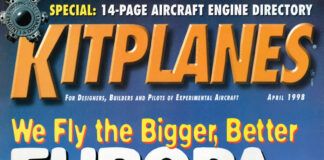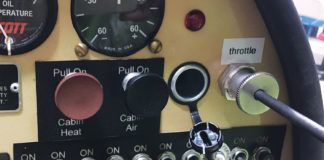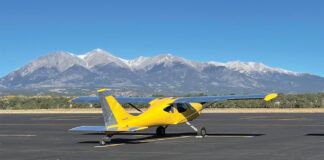Spackling Paste? Wow!
I commend Vince Homer for his exhaustive study of spackling paste as a filler/fairing compound over a foam base [“Using Drywall Spackling Paste as a Filler Material,” November 2017]. However, I will be quick to advise: Do not use spackling paste between foam (or any base) and a composite skin of any aerodynamic lifting body or control surface! Spackling paste is not an adhesive and will allow delamination in some dynamic environments. It is in the realm of concrete—superior compressive strength, very poor tensile strength. The article relates to “shear” strength but not tensile strength, which has everything to do with interlaminar security. I recommend doing peel tests of a composite skin laid over spackling pastes. By the way, micro-filled epoxy is easy to sand, is a superior adhesive, and has a density of 27 to 33 pounds per cubic foot.
—Howard Riley
We at KITPLANES (and Vince Homer) totally agree with you, and he made that point in the article—spackling paste is for non-structural, filling applications only.—Ed.
RV-12iS Questions
Great article on Van’s Aircraft’s new RV-12iS [“Updated!,” November 2017]. I just have a couple questions: In the panel photo at the top of page 11, where is the Garmin 625? Also in the engine photo on page 14, did you mean ignition coils, not cowls?
—Kevin Gill
Argh—now we’ve used up our two allowable mistakes for the year! The Garmin 625 is an option but was not installed in the prototype (hence the caption for the picture is incorrect), but it is available and there is panel space and wiring provisions for it. With regards to your second question, yes indeed, the caption should say “coil” instead of “cowl.” The appropriate proofreader will be (gently) flogged.—Ed.
Forty-Amp Catch 22
I just finished “Forty-Amp Catch-22” in the December 2017 issue of KITPLANES and noted, at best, an omission or, worse, an error. Paul notes that he replaced the 40-amp circuit breaker with a 60-amp breaker, but made no mention of the existing wire size. If sized for 40 amps, it would be undersized for 60 amps and would need to be increased (probably from a #8 to a #6). Great magazine!
—John Ruhl
Yes indeed, it is important to match wire size to circuit protection, and in this case we checked—the wire gauge is all appropriate for the 60-amp breaker. Fortunately Mr. Dye has a large stock of oversized wire on hand (although we don’t know why).—Ed.
Always More to Learn
We build airplanes to obtain the plane we want to have and the desire to learn all there is to know about building, maintaining, and flying airplanes. This learning is an ongoing process. I thank the authors who contribute to KITPLANES for providing an education into all the different areas involved in this process. There is always something new to learn and tips to be gained on how to improve a project.
—Larry LaGrone
Write to [email protected].





